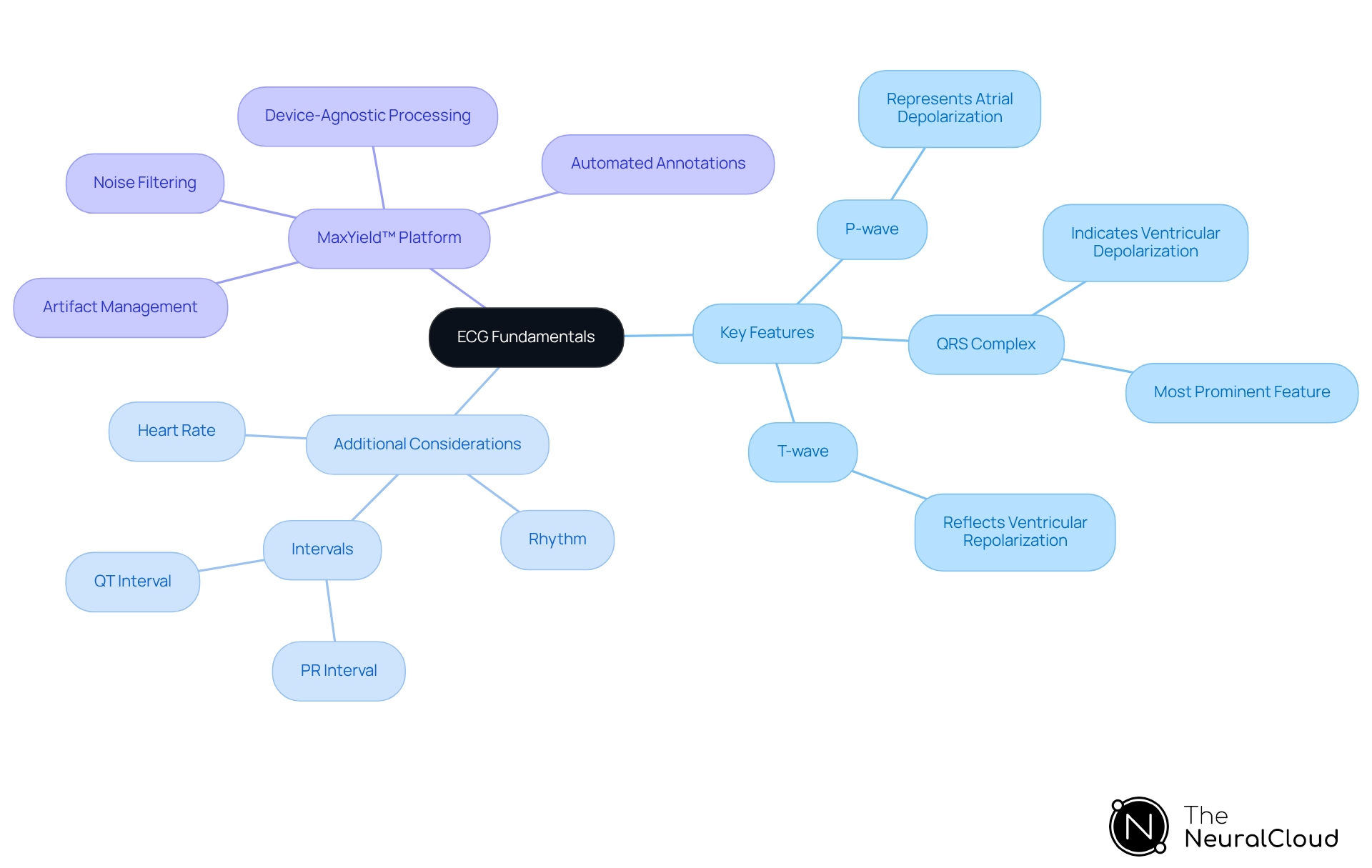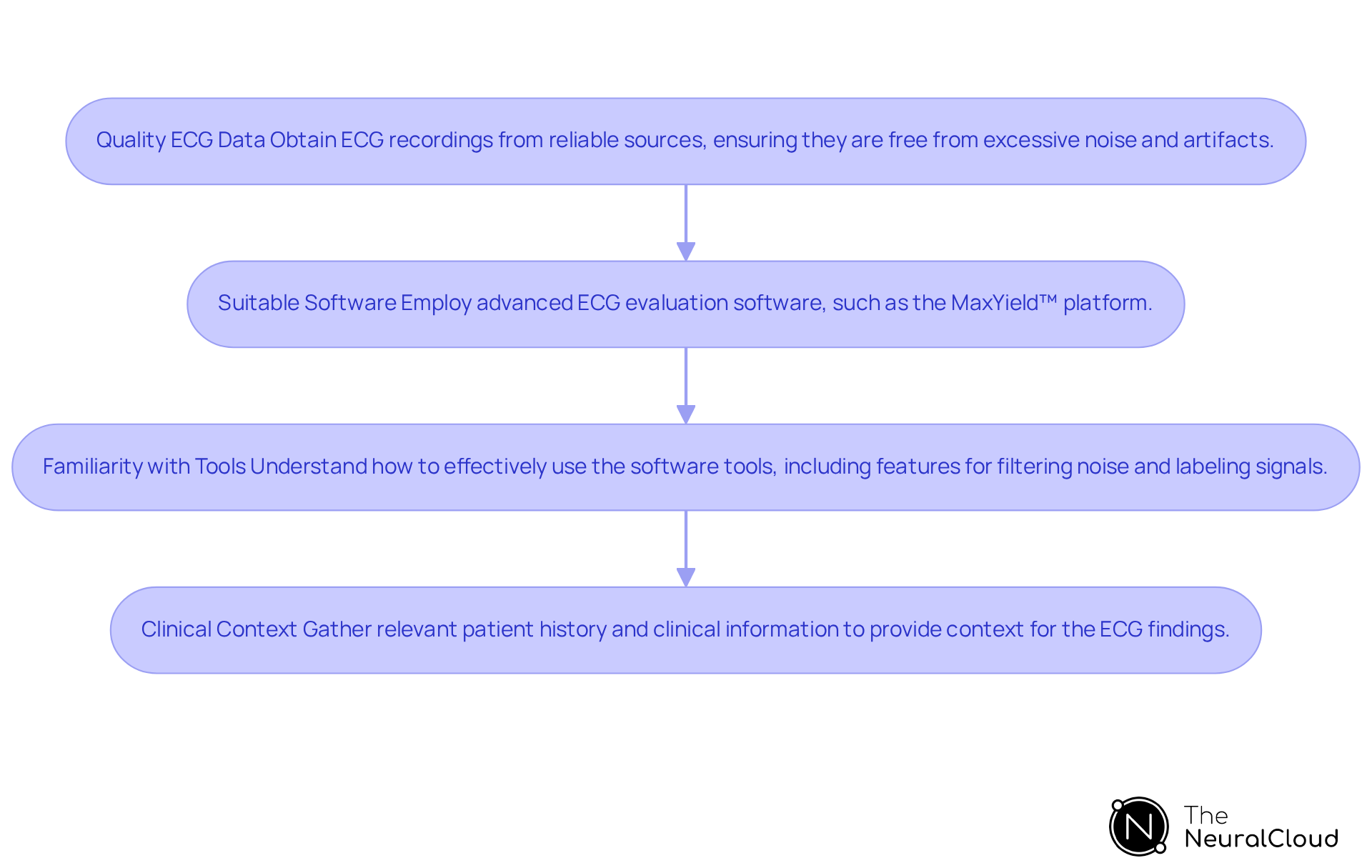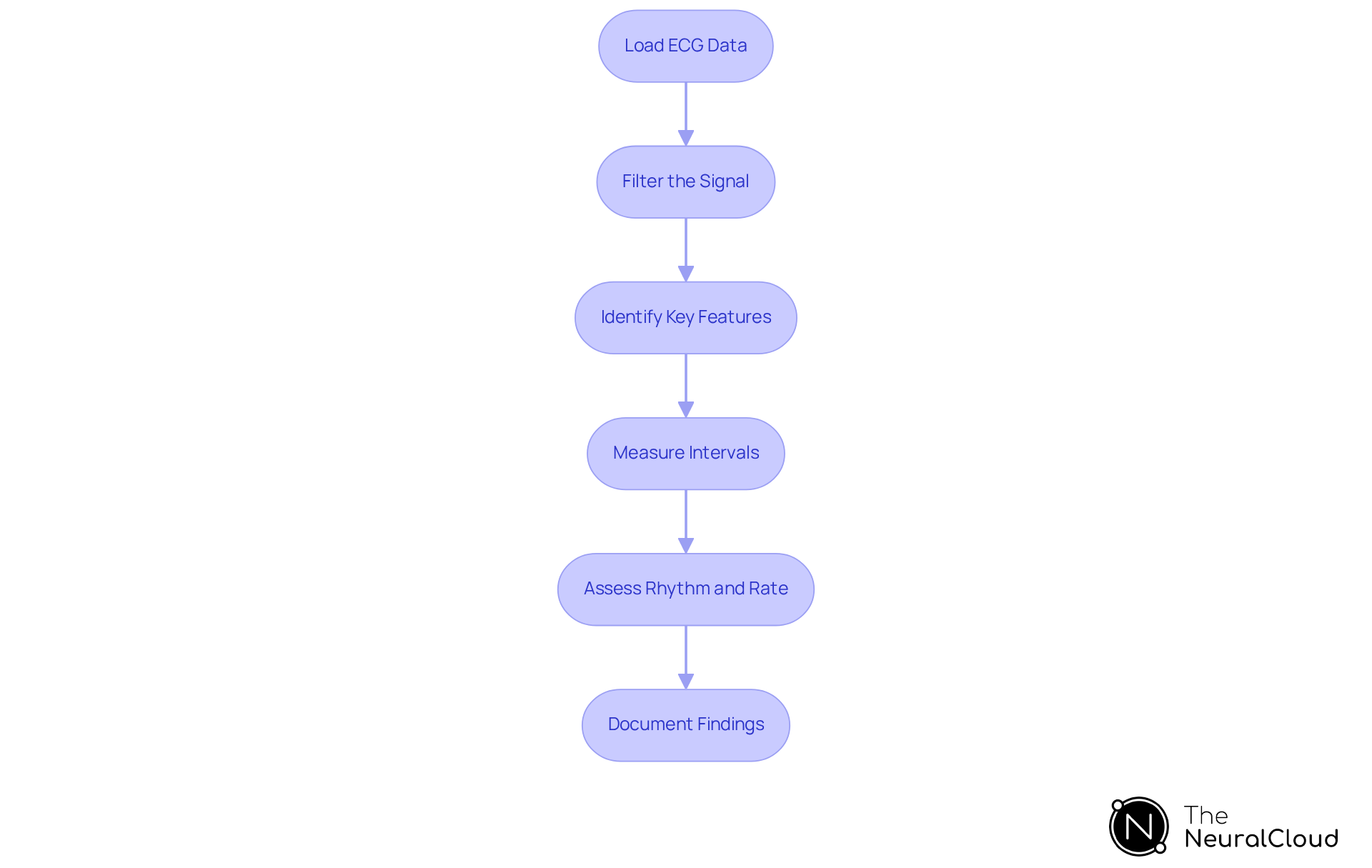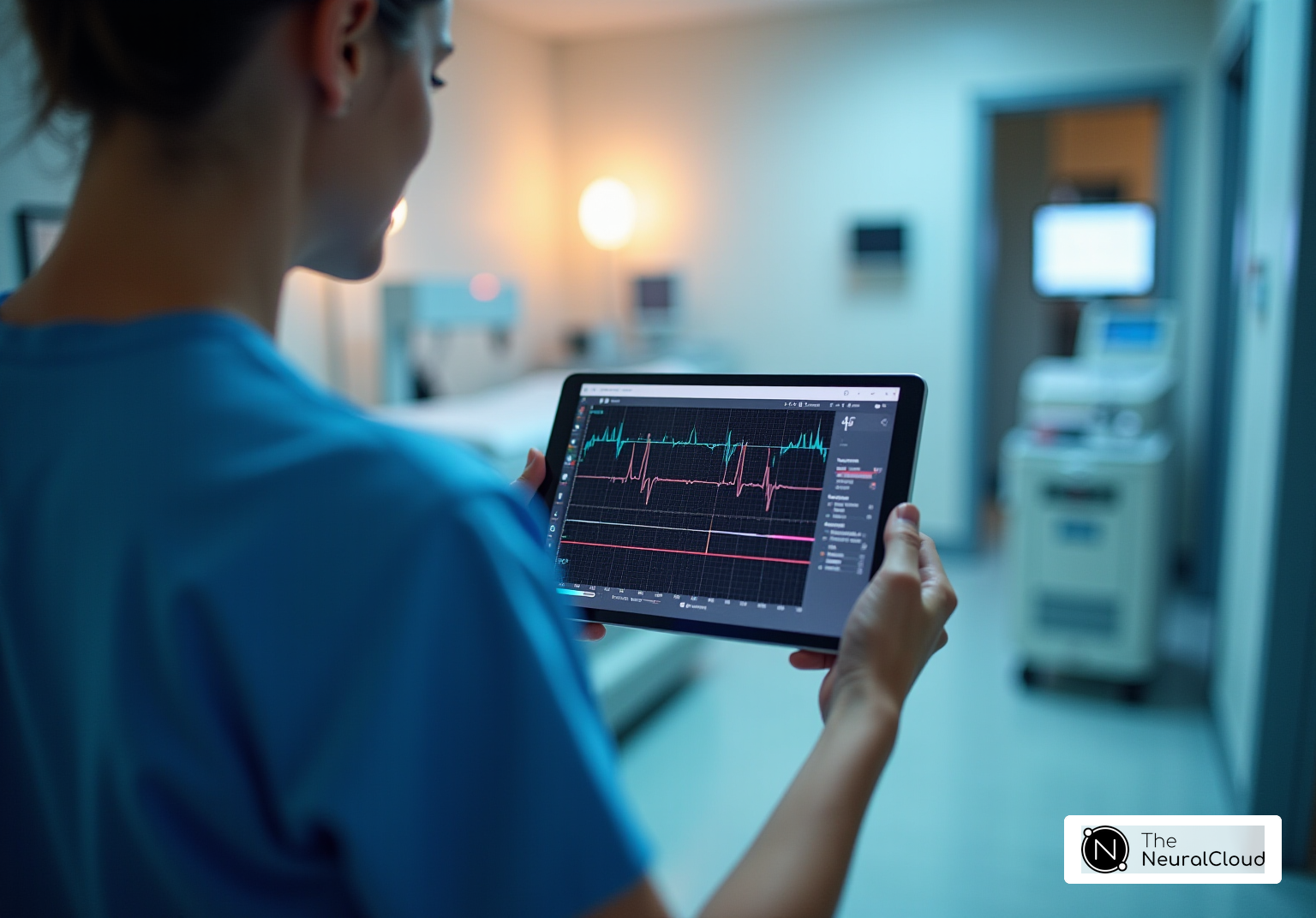Overview
The article provides an overview of the essential steps for effectively analyzing ECG signals, highlighting the challenges faced in ECG analysis. It emphasizes the significance of understanding ECG fundamentals, preparing for analysis, and utilizing advanced software tools like the MaxYield™ platform. By outlining a systematic approach, the article addresses key aspects such as:
- Noise filtering
- Identifying important waveform features
- Troubleshooting common challenges
The MaxYield™ platform offers several features that enhance ECG analysis. It provides advanced noise filtering capabilities, allowing for cleaner signal interpretation. Furthermore, it aids in the identification of key waveform features, which is crucial for accurate diagnosis. The platform also includes troubleshooting tools that help healthcare professionals navigate common issues encountered during ECG evaluations.
The advantages of using the MaxYield™ platform are substantial for healthcare professionals. By improving the accuracy and efficiency of ECG evaluations, it enables quicker and more reliable patient assessments. This not only enhances clinical decision-making but also contributes to better patient outcomes. The systematic approach supported by the platform ensures that professionals can focus on critical aspects of ECG analysis without being hindered by technical challenges.
In conclusion, the article underscores the importance of utilizing advanced tools like the MaxYield™ platform in ECG analysis. By understanding the fundamentals and employing effective techniques, healthcare professionals can significantly improve their diagnostic capabilities and ultimately provide better care.
Introduction
Understanding the intricacies of ECG analysis poses significant challenges for healthcare professionals striving to enhance diagnostic accuracy and patient care. As the complexity of ECG data increases, so do the hurdles in effective interpretation. This guide addresses these challenges while introducing the MaxYield™ platform, which offers innovative solutions for ECG analysis. By grasping fundamental waveform components and utilizing advanced software tools, practitioners can streamline the evaluation process and improve their diagnostic capabilities.
The MaxYield™ platform is designed to simplify ECG analysis, allowing healthcare professionals to identify abnormalities with greater accuracy. It provides features that enhance the understanding of ECG signals, such as intuitive visualizations and automated reporting tools. These advantages not only facilitate quicker decision-making but also reduce the likelihood of oversight in analysis, ultimately benefiting patient outcomes.
Moreover, the platform supports practitioners in navigating potential pitfalls in ECG interpretation. By leveraging its advanced capabilities, users can ensure they are not only recognizing abnormalities but also comprehensively understanding the underlying data. This holistic approach to ECG analysis is essential for delivering high-quality patient care in today’s complex healthcare environment.
Understand ECG Fundamentals
To effectively analyse ECG signals, it is essential to understand the fundamental components of an ECG waveform. An ECG typically consists of several key features:
- P-wave: Represents atrial depolarization.
- QRS Complex: Indicates ventricular depolarization and is the most prominent feature of the ECG.
- T-wave: Reflects ventricular repolarization.
Familiarizing yourself with these components will aid in recognising abnormalities and will help you to analyse ECG data accurately. Additionally, to analyse ECG, understanding the importance of heart rate, rhythm, and intervals—such as PR and QT intervals—is crucial for a thorough examination.
The MaxYield™ platform by Neural Cloud Solutions significantly enhances the evaluation process through advanced noise filtering and artifact management. This system accurately maps PQRST waveforms, even in recordings with high levels of noise and physiological variability. As a result, it allows for rapid isolation of ECG waves from challenging conditions, which enhances overall accuracy and efficiency when we analyse ECG.
The platform’s device-agnostic signal processing ensures it can handle various recording types seamlessly. Moreover, automated annotations simplify the evaluation process, enabling health tech developers to allocate their time and expertise more effectively. This essential knowledge, combined with the innovative aspects of the system, will serve as a valuable reference point as you advance through the evaluation steps.

Prepare for ECG Analysis
Before diving into ECG analysis, it is essential to ensure you have the following components in place:
- Quality ECG Data: Obtain ECG recordings from reliable sources, ensuring they are free from excessive noise and artifacts. This foundational aspect is critical for the ability to analyse ECG accurately.
- Suitable Software: Employ advanced ECG evaluation software, such as the MaxYield™ platform. This tool automates many facets of assessment, significantly improving precision in readings.
- Familiarity with Tools: Understand how to effectively use the software tools, including features for filtering noise and labeling signals. Proficiency in these tools enhances your capability to analyse ecg.
- Clinical Context: Gather relevant patient history and clinical information to provide context for the ECG findings. This background is vital for how we analyse ECG results accurately.
By preparing these elements, you will create a conducive environment for precise and efficient ECG evaluation.

Analyze ECG Waveforms
To analyze ECG waveforms effectively, follow these steps:
- Load the ECG Data: Import the ECG recordings into your evaluation software.
- Filter the Signal: Utilize the advanced noise filtering capabilities of the platform, employing gold standard methodologies to remove noise and artifacts. This ensures the signal is clear for examination.
- Identify Key Features: Locate and label the P-waves, QRS complexes, and T-waves. Automated tools within this system can assist in this process, significantly enhancing accuracy and efficiency, though manual verification is recommended.
- Measure Intervals: Calculate important intervals such as PR, QT, and RR intervals to assess heart function.
- Assess Rhythm and Rate: Determine the heart rate and rhythm regularity, looking for any irregularities that may indicate underlying conditions.
- Document Findings: Record your observations and any irregularities noted during the examination for further review and clinical decision-making.
By adhering to these steps, you will be able to analyse ECG waveforms in a comprehensive manner. This results in more precise interpretations, improved by the automation and flexibility of Neural Cloud Solutions' offerings.

Troubleshoot ECG Analysis Challenges
When faced with challenges during ECG analysis, it is essential to consider the following troubleshooting steps, enhanced by Neural Cloud Solutions' MaxYield™ platform:
- Excessive Noise: If the ECG signal is too noisy, utilize the advanced noise filtering capabilities of the system. Revisit the filtering settings and adjust parameters to enhance signal clarity, leveraging the platform's ability to transform lengthy and noisy recordings into clean, crisp signals.
- Misidentified Signals: If signals are incorrectly labeled, manually verify the automated labels against the raw data. The platform's P, QRS, and T Wave highlighting can aid in precisely identifying waveforms, so modify the algorithm settings if needed.
- Inconsistent Data: If you notice discrepancies in the data, check the source of the ECG recordings for quality issues or artifacts. The solution helps streamline your workflow by processing more data in less time, which can reduce inconsistencies.
- Software Issues: If the analysis software is malfunctioning, ensure it is updated to the latest version and consult the user manual for troubleshooting tips. The system is designed to automate repetitive tasks, reducing the likelihood of software-related issues.
- Seek Expert Advice: If challenges persist, consider consulting with colleagues or experts in the field for additional insights and solutions. Engaging with the community can provide valuable perspectives on utilizing the product effectively.
By being proactive in troubleshooting and leveraging the capabilities of MaxYield™, you can maintain the integrity of your analysis and ensure reliable results when you analyse ecg.

Conclusion
Mastering ECG analysis is a critical skill for healthcare professionals, enabling accurate interpretation of cardiac signals and timely decision-making. Understanding the fundamental components of ECG waveforms, including the P-wave, QRS complex, and T-wave, is essential for recognizing abnormalities. The MaxYield™ platform enhances signal clarity and automates various aspects of the analysis, significantly improving diagnostic capabilities for practitioners.
Effective ECG analysis begins with preparing quality data and suitable software, followed by troubleshooting common challenges. A systematic approach is vital, which includes:
- Filtering signals
- Identifying key features
- Measuring intervals
- Documenting findings
Each step builds upon the previous one, ensuring a comprehensive understanding of the ECG and its implications for patient health.
The ability to analyze ECG signals accurately is not merely a technical skill; it is a vital component of patient care. By leveraging innovative technologies like the MaxYield™ platform and adhering to structured methodologies, healthcare professionals can enhance their effectiveness in diagnosing and treating cardiac conditions. Embracing these practices can lead to improved patient outcomes, making ECG analysis an indispensable tool in modern medicine.
Frequently Asked Questions
What are the key components of an ECG waveform?
The key components of an ECG waveform include the P-wave, which represents atrial depolarization; the QRS Complex, indicating ventricular depolarization and being the most prominent feature; and the T-wave, which reflects ventricular repolarization.
Why is it important to understand heart rate, rhythm, and intervals in ECG analysis?
Understanding heart rate, rhythm, and intervals, such as PR and QT intervals, is crucial for a thorough examination of ECG data, as it aids in recognizing abnormalities and accurately analyzing the signals.
How does the MaxYield™ platform enhance ECG evaluation?
The MaxYield™ platform enhances ECG evaluation through advanced noise filtering and artifact management, allowing for accurate mapping of PQRST waveforms even in noisy recordings. This improves overall accuracy and efficiency in ECG analysis.
Is the MaxYield™ platform compatible with different types of recording devices?
Yes, the MaxYield™ platform features device-agnostic signal processing, ensuring it can handle various recording types seamlessly.
What benefits do automated annotations provide in ECG analysis?
Automated annotations simplify the evaluation process, enabling health tech developers to allocate their time and expertise more effectively during ECG analysis.






